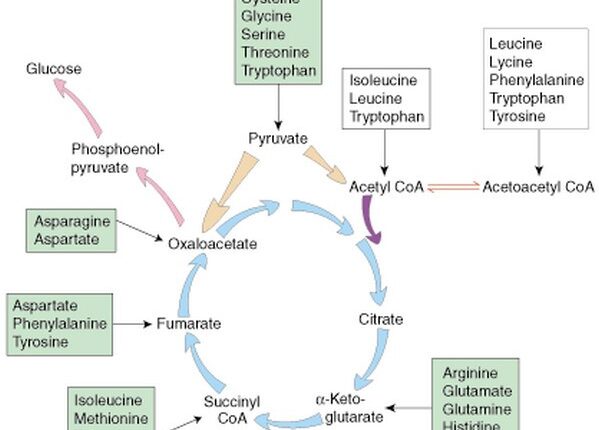Library
Amphibolic Role of the TCA Cycle with Mnemonics
- October 28, 2024
- Posted by: Namrata Chhabra
- Category: Energy metabolism Learning resources Library Metabolism of Carbohydrates Quick Revision Series Quick revisions Quick revisions USMLE Content

The TCA cycle (Krebs cycle) serves as a central hub for both catabolic (energy-producing) and anabolic (biosynthetic) processes, making it a dual-purpose amphibolic pathway. Below is a table that summarizes the catabolic and anabolic roles of the TCA cycle, along with mnemonics to make these concepts easier to remember.
Catabolic Role of the TCA Cycle:
| Catabolic Role | Process | Explanation |
| Breakdown of Acetyl-CoA | Carbohydrate, fatty acid, and amino acid oxidation | Acetyl-CoA, derived from carbohydrates, fatty acids, and amino acids, enters the TCA cycle, breaking it down to produce CO₂, NADH, and FADH₂. |
| Production of NADH and FADH₂ | Electron donors for ATP synthesis | NADH and FADH₂ generated by the TCA cycle donate electrons to the electron transport chain (ETC), driving ATP synthesis via oxidative phosphorylation. |
| Release of CO₂ | Decarboxylation reactions | The TCA cycle releases two CO₂ molecules per turn, facilitating the removal of carbon waste from catabolism. |
| Substrate-level phosphorylation | GTP or ATP production | The conversion of succinyl-CoA to succinate generates GTP (or ATP) via substrate-level phosphorylation, an ATP-producing reaction in the TCA cycle. |
Anabolic Role of the TCA Cycle:
| TCA Intermediate | Anabolic Pathway | Mnemonic | Explanation |
| Citrate | Fatty acid and cholesterol synthesis | “Citrate Cleaves for Fatty Acids and Cholesterol” | Citrate leaves the mitochondria and is converted to acetyl-CoA, which is used for lipid biosynthesis. Citrate links carbohydrate metabolism with lipid synthesis. |
| α-Ketoglutarate | Amino acid synthesis (Glutamate, Glutamine, GABA) | “Alpha goes for Amino Acids” | α-Ketoglutarate is transaminated to produce glutamate, which serves as a precursor for other amino acids like glutamine and proline and neurotransmitters like GABA. |
| Succinyl-CoA | Heme synthesis and ketone body utilization | “Succeed with Succinyl for Heme and Ketones” | Succinyl-CoA is essential for heme biosynthesis and plays a role in ketone body utilization. |
| Oxaloacetate | Amino acid synthesis (Aspartate) and Gluconeogenesis | “OAA Opens the Glucose Pathway” | Oxaloacetate participates in transamination to produce aspartate, which is crucial for nucleotide biosynthesis, and it also supports gluconeogenesis by generating PEP. |
| Malate | Gluconeogenesis | “Malate Moves for Glucose” | Malate exits the mitochondria and is converted to oxaloacetate in the cytosol, contributing to glucose production. Malate also shuttles, reducing equivalents. |
| Fumarate | Urea cycle linkage | “Fumarate Fuels Urea” | Fumarate, produced in the urea cycle, re-enters the TCA cycle to maintain metabolic balance. |
Summary:
The TCA cycle’s catabolic role is to oxidize acetyl-CoA from various sources, producing CO₂, NADH, FADH₂, and GTP/ATP to generate energy through oxidative phosphorylation. Simultaneously, the cycle plays an anabolic role by providing intermediates for the biosynthesis of fatty acids, amino acids, nucleotides, heme, and glucose. This integration of energy production and biosynthesis highlights the TCA cycle’s central role in metabolism, ensuring cellular homeostasis and metabolic flexibility.
